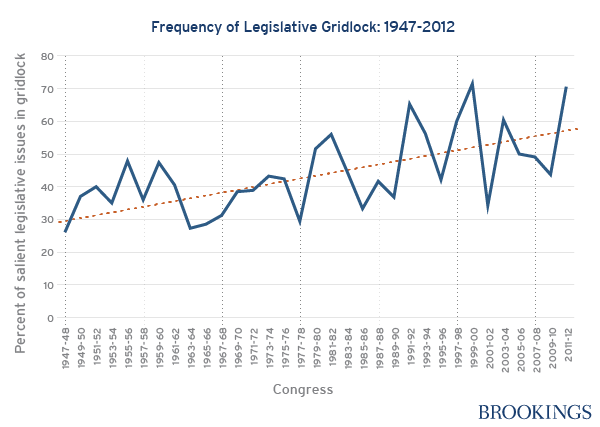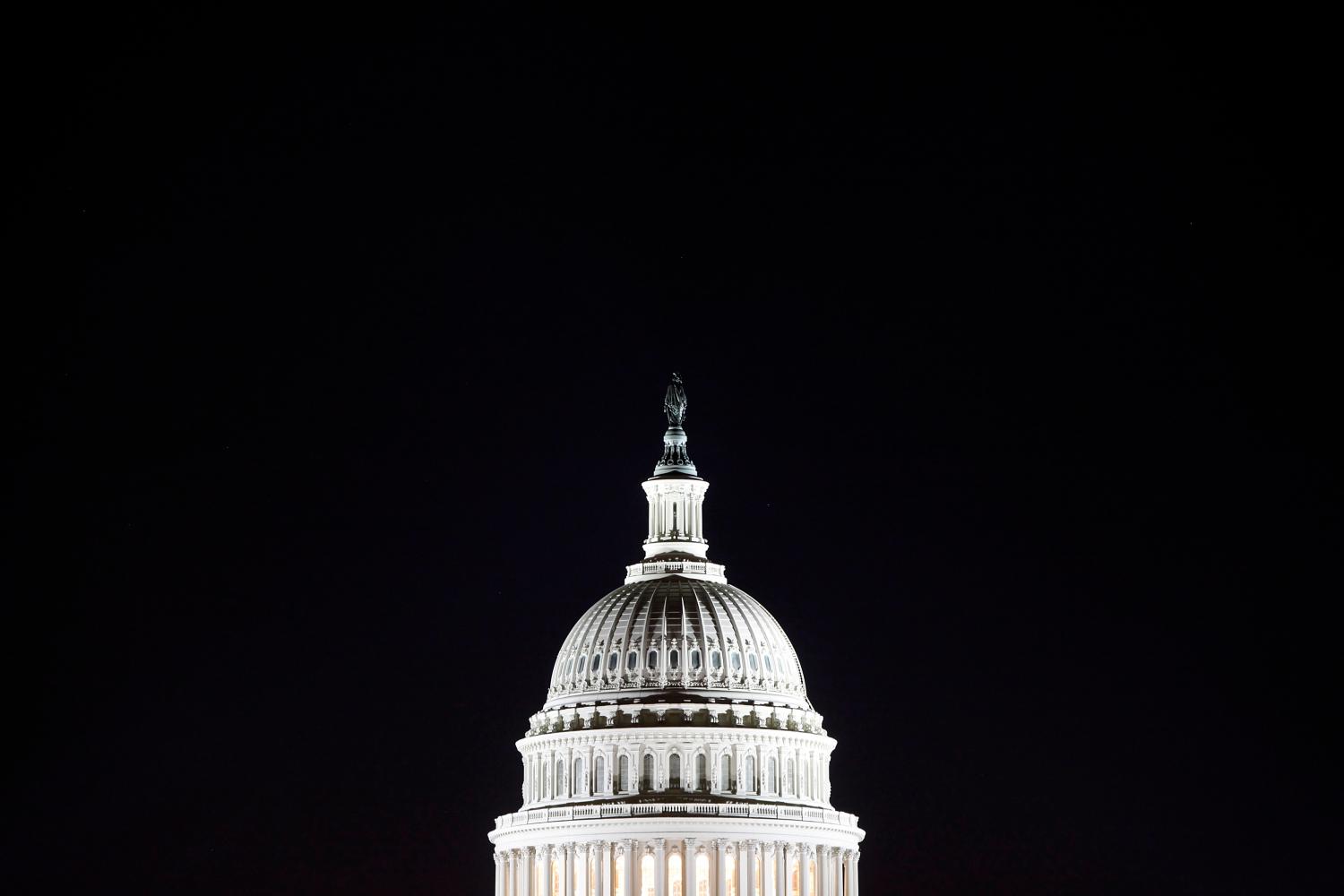Recent legislative drama like last year’s shutdown debacle, coupled with Congress’s paltry legislative records since 2011, has fueled the debate over whether U.S. national political system is irreparably dysfunctional. In the new paper “Polarized We Govern?,” Sarah Binder finds that levels of legislative gridlock have steadily risen over the past half-century. Today, 75 percent of the salient issues on Washington’s agenda are subject to legislative gridlock.

- Binder examines the unsigned editorials in The New York Times to calculate the degree of legislative deadlock on salient issues (those editorialized 4 or more times) in each Congress between 1947-2012.
- Overall agenda size increases incrementally over the most recent decade, but the number of salient issues rises markedly in the 108th (2003-4), 110th (2005-6) and 112th (2011-12) Congresses.
- As House and Senate chamber medians diverge in their policy views—regardless of whether party control is unified or split between the chambers—legislative deadlock grows.
The results of Binder’s analysis confirm the media’s recent focus on the impact of polarized parties on Congress’s ability to legislate. Recent congressional deadlock has been extremely costly, both to the fiscal health of the country and to its citizens’ trust in their government. So long as some degree of polarization is driven by sheer partisan team play–in which the opposition party is more likely to object to proposals endorsed by the president—then extreme levels of polarization will continue to lead to unprecedented levels of deadlock.
Editor’s Note: This is a revised version of a paper originally presented at Representation & Governance: A Conference in Honor of David Mayhew, Yale University, May 29-30, 2013. Sarah Binder thanks Joshua Bleiberg, Danny Guenther, Muxin Yu, and Miriam Gough for their invaluable research assistance.




